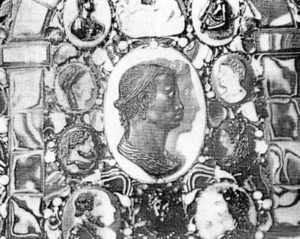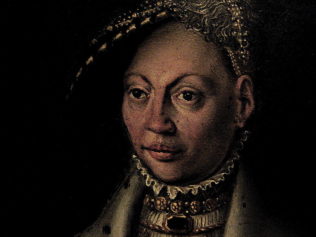BY RUNOKO RASHIDI*
Alessandro de’ Medici: First Duke of Florence and First Black Head of State in the Modern Western World
We have already discussed in earlier essays the Severan Dynasty of Imperial Rome, the Moors of Spain and Kenneth the Niger of Scotland. But African blood in Europe’s royalty also appears definitely in 16th century Italy. Let us speak now of distinguished African men in the European Renaissance. Indeed, Alessandro de’ Medici, early 16th century Duke of Florence, has the distinction of being the first Black head of state in modern Western history.
According to historian J.A. Rogers, “To students of color discrimination, European history offers no more astonishing figure than Alessandro de’ Medici, `The Moor,’ first reigning Duke of Florence.”
Alessandro de’ Medici (July 22, 1510 – Jan. 6, 1537), called “il Moro” (“the Moor”), was Duke of Penne and Duke of Florence. He was the last member of the senior branch of the Medici family to rule Florence. He was recognized as the only son of Lorenzo II de’ Medici (grandson of Lorenzo de’ Medici, the Magnificent), although many scholars today regard him to be in fact the illegitimate son of Giulio de’ Medici (later Pope Clement VII) — nephew of Lorenzo de’ Medici. Historians believe that he was born to an African woman working in the Medici household identified as Simonetta da Collavechio.
As Duke of Florence, Alessandro, a contemporary of Michelangelo, “became the head of one of the most illustrious families in European history — a family that furnished a long roll of statesmen and patrons of art, as well as three popes, three kings of France, three queens and a mother of one of England’s kings.”
Alessandro was made hereditary Duke of Florence in early 1532. The Florence of Alessandro’s day was rife with political intrigue and the Duke fell victim, sad to say, to an assassination orchestrated by his cousin Lorenzino de’ Medici while only in his late 20s in 1537. It was an assassination compared to the murder of Julius Caesar.
Alessandro was survived by his two children with Taddea Malespina. These children were Giulio, a son, and Giulia, a daughter — a painting of which in the Walters Art Museum in Baltimore, Maryland, does not fail to portray her African bloodlines. When Giulia, in 1550, at about the age of 15, became engaged to Francesco Cantelmo, the Count of Alvito and the Duke of Popoli, she was provided a dowry equivalent today to about US$8 million.
The African presence in Europe, as we have tried to demonstrate, ranges in status from the very high to the very low — from the exalted to the humble. This period in history, the 16th century, and this part of the world, Italy, well illustrates this.
The man who became known as Saint Benedict the Moor, also known as St. Benedict the Black and St. Benedict of San Philadelphio (also known as San Fratello), was born to enslaved Africans (Christian converts) Christopher and Diana Manasseri, near Messina, Sicily, on either April 24 or April 26, 1526. Benedict was a contemporary of Alessandro de’ Medici of Florence, Italy.
As a reward for the loyal service of his parents to their owners, Benedict was given his freedom at the age of 18. He did not attend any school and remained illiterate his entire life. As a young man, Benedict was invited to join local hermits in Monte Pellegrino, eventually became their leader and made a pilgrimage to Syria and Egypt.
Although unable to read or write, Benedict, nevertheless, over time became highly respected for his deep, broad and intuitive understanding of both theology and the scriptures, and was frequently appealed to for guidance and counseling.
He is said to have died on the day and at the time that he predicted, April 4, 1589 in Palermo, Italy. He was beatified by Pope Benedict XIV in 1743 and canonized in 1807 by Pope Pius VII. Homage to Saint Benedict the Moor is recognized throughout the United States, Mexico, Central and South America, including Argentina, Brazil and Venezuela. His Feast Day is April 4.
Juan Latino: A Distinguished African Scholar in 16th Century Spain
“The writer was not engendered in [this] region. He comes, Latino, from the land of the Ethiopians to sing the marvelous deeds of Austria with the art of song.”
— Juan Latino
Scholar of famous Granada and teacher of brilliant young students, Orator pious in speech, outstanding in doctrine and morals, Offspring and son deep black with Ethiopian forebears, He learnt as an innocent child the precepts that lead to salvation. He sang in the fair Latin tongue the illustrious Austrian’s glories, Under this pillar he lies; he will rise with his wife well-beloved.
— Juan Latino, epitaph

In 1528, he was brought from Africa (perhaps Guinea) to Spain. As a youth, he learned Latin and Greek and graduated from the University of Granada in 1557. He was so proficient in Latin that he dropped his slave name and became famous as Juan Latino. He was the author of the Austriad, a heroic poem in Latin dedicated to Don Juan of Austria after his victory over the Morisco insurrection in Granada, known as the War of the Alpujarras (1568–1572). Henry Louis Gates refers to Juan Latino as “the first person of sub-Saharan African descent to publish a book of poems in a Western language.”
SOURCES:
DeCosta, Miriam, ed. Blacks in Hispanic Literature: Critical Essays. Port Washington, NY: Kennikat Press, 1977.
Gates, Henry Louis Jr., ed., Juan Latino: The First Black Poet, with translations by John Winkler (unpublished).
Rogers, Joel Augustus. World’s Great Men of Color, 2 Vols. Edited with an Introduction, Commentary, and New Bibliographical Notes by John Henrik Clarke. New York: Collier, 1972.
*Runoko Rashidi is an historian, anthropologist, lecturer and world traveler. To date, he has authored or edited 18 books about history and travel. He is currently based in Los Angeles and regularly leads African-heritage tours. His next tours are to Cameroon in December 2014 and Ethiopia in May 2015. For further information write to Runoko at Runoko@hotmail.com or call him at 323 920 6055.



